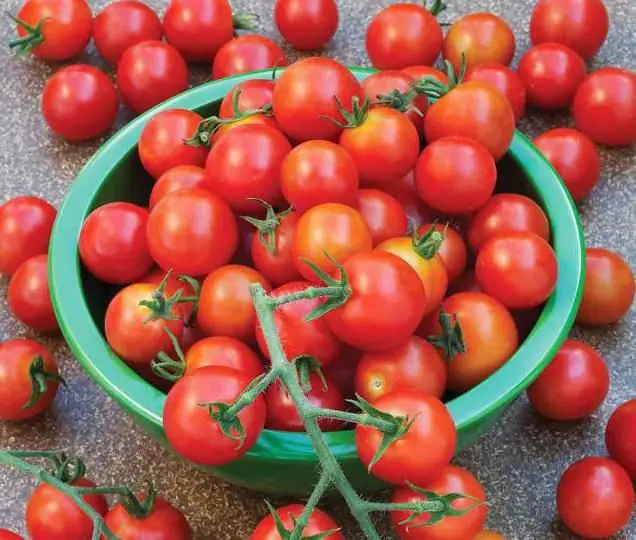2026 Author: Howard Calhoun | [email protected]. Last modified: 2025-01-24 13:10:47
Fiberglass is a well-known material that is used in many areas of industry, shipbuilding and automotive. Its most famous and popular type is structural fiberglass. Especially often it is used for pasting.
Features
This material is different, due to its mechanical properties. Structural fiberglass can be of different thicknesses and densities. The densest material gives high strength to the finished product, but it must allow the resin to easily penetrate the fabric structure and wrap the fiberglass well. This is what makes it possible to obtain a non-separable solid material that has many positive properties.

For the purpose of higher impregnation with resin, structural fiberglass is pre-impregnated with special agents - lubricants that improve adhesion with various types of resins, especially epoxy and polyester. In the case when the requirements for the strength of products are not too high, to obtain fiberglass partsnon-woven glass materials, called glass mats, can be used. They consist of randomly arranged parts of glass roving, that is, a bundle of glass fibers. These materials are characterized by a significantly high absorbency relative to the resin. Thanks to them, you can more easily obtain a homogeneous material.
Among the structural fiberglass according to GOST there is a novelty - this is a material made of hollow fiberglass. Each fiber is a tube of microscopic diameter, not a rod. As a result, the material has a similar strength, but is lighter by 20-30%. The scope of such material is extensive. It is needed wherever weight plays a big role, especially in sports car construction, aviation and so on.

Benefits
Structural fiberglass according to GOST in comparison with standard fiberglass is distinguished primarily by stability and flexibility. It also has the following properties:
- fire safety;
- long service life;
- chemical and corrosion resistance;
- sustainable;
- possibility of application at temperatures from -200 °С to +550 °С;
- wear resistance.
Application areas
Structural fiberglass is distinguished by its reasonable cost due to its technical properties. This material is equally often used:
- on production lines that require high precision and strength - technical parts for space equipment and aircraft productsspheres;
- in the household area - vehicle tuning, construction and pipeline channels.
The fabric, which is made of E and C category glass threads, direct lubricant and paraffin emulsion, has found its application in the manufacture of products that must have a high strength level and corrosion resistance. These include boats, tanks and pipes. The use of structural fiberglass is justified in various areas of human activity, since it increases the insulating characteristics of structures and parts, guarantees reliable sealing of technical containers.

Linen fiberglass fabrics
Structural fiberglass fabric consists of fibers that intertwine at any intersection of the weft and warp. The intersection of the threads is carried out at an angle of 90 ° and looks like a chessboard. These fiberglass fabrics are considered the most durable, tough and dense. For this reason, they have found their application in the reinforcement of particularly loaded areas. However, on the other hand, this material is forbidden to be used for the purpose of reinforcing zones of complex shapes, since it does not bend and stretch well. This type of weaving is typical for structural fiberglass T 13 and T 23.
Fiberglass twill fabric
They are made up of fibers that are intertwined in a special way. The weft thread crosses the warp threads through one. On the surface of the fabric, a pattern of diagonal lines at an angle of 45 ° is clearly visible, which occurs due to the alternation of the intersections of the warp and weft threads. The main characteristic of structural fiberglass fabrics is high plasticity, in comparison with plain weaving materials. They have a minimum density and maximum stretching ability. Twill glass fabrics can be used for reinforcement purposes. They are easy to use when creating structures of complex configurations, with bends, ledges and corners.

Satin fiberglass fabrics
This type is produced thanks to the loose weave of fibers. Moreover, on one side there are more weft threads, on the other - warp threads. If you look closely, you can see diagonal stripes that run at an angle that differs from the standard 45° angle for twill weave. Such fabrics are characterized by increased flexibility at low density. It is necessary to choose them if it is planned to create products of complex configuration.
This type of weave includes the T 11 grade of structural fiberglass. But it should be noted that it has a high density, so it is often stopped by attention due to its strength, rather than its ability to form.
Recommended:
Coins of the Soviet Union and modern Russia: what metal are coins made of, their features and varieties

The production of money on the territory of our country at all times was associated with a number of difficulties: the economy either developed or collapsed sharply, dragging faith in the Russian currency to the bottom, giving rise to massive disbelief in it and inflation. Now we have clear state standards for production and minting, all reforms are taking place gradually and accurately, but during the times of revolutions, civil and world wars, the question of what metal coins are made of in our country faded into the background
Connecting couplings: advantages, varieties and application features

Couplings are special products that are used for the construction of pipelines, mechanisms, cable lines. They can be of different types and made from different materials
Access control to the premises: concept, features, varieties and principle of operation

With the help of access control to the premises, you can not only maintain the protection of the object, but also facilitate the work of regulatory authorities. With low installation costs, it helps to save on security
Sweet varieties of tomatoes: reviews. Sweet varieties of tomatoes for greenhouses

Gardeners plant various vegetables. Sweet varieties of tomato are considered one of the most sought-after varieties, as they are ideal for different occasions. More about them will be discussed in the article
Stable - what is it? Structural features

A barn is a pen for animals, where they are sheltered at night, as well as during illness. They spend a lot of time there, which means it should be warm and clean. The he alth of livestock, their fertility and growth depend on it

